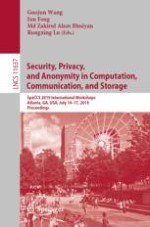2019 | OriginalPaper | Buchkapitel
Predictably Deterrable? The Case of System Trespassers
verfasst von : David Maimon, Alexander Testa, Bertrand Sobesto, Michel Cukier, Wuling Ren
Erschienen in: Security, Privacy, and Anonymity in Computation, Communication, and Storage
Aktivieren Sie unsere intelligente Suche, um passende Fachinhalte oder Patente zu finden.
Wählen Sie Textabschnitte aus um mit Künstlicher Intelligenz passenden Patente zu finden. powered by
Markieren Sie Textabschnitte, um KI-gestützt weitere passende Inhalte zu finden. powered by
